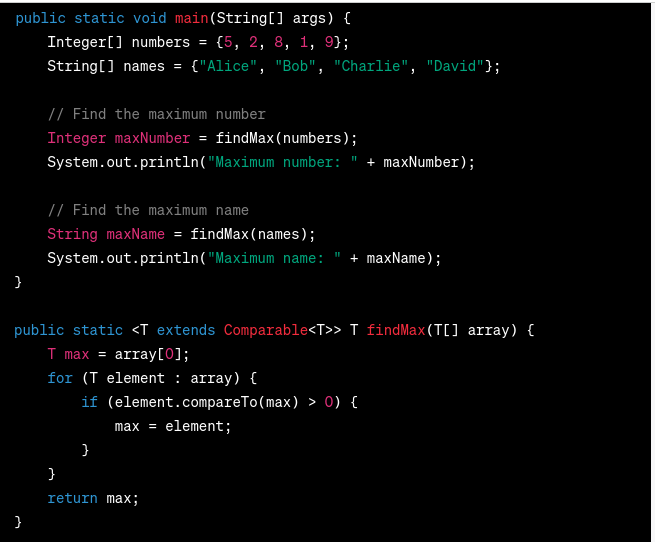For working professionals
For fresh graduates
- Study abroad
More
- Executive Doctor of Business Administration from SSBM
- Doctorate in Business Administration by Edgewood College
- Doctorate of Business Administration (DBA) from ESGCI, Paris
- Doctor of Business Administration From Golden Gate University
- Doctor of Business Administration from Rushford Business School, Switzerland
- Post Graduate Certificate in Data Science & AI (Executive)
- Gen AI Foundations Certificate Program from Microsoft
- Gen AI Mastery Certificate for Data Analysis
- Gen AI Mastery Certificate for Software Development
- Gen AI Mastery Certificate for Managerial Excellence
- Gen AI Mastery Certificate for Content Creation
- Post Graduate Certificate in Product Management from Duke CE
- Human Resource Analytics Course from IIM-K
- Directorship & Board Advisory Certification
- Gen AI Foundations Certificate Program from Microsoft
- CSM® Certification Training
- CSPO® Certification Training
- PMP® Certification Training
- SAFe® 6.0 Product Owner Product Manager (POPM) Certification
- Post Graduate Certificate in Product Management from Duke CE
- Professional Certificate Program in Cloud Computing and DevOps
- Python Programming Course
- Executive Post Graduate Programme in Software Dev. - Full Stack
- AWS Solutions Architect Training
- AWS Cloud Practitioner Essentials
- AWS Technical Essentials
- The U & AI GenAI Certificate Program from Microsoft
6. JDK in Java
7. C++ Vs Java
16. Java If-else
18. Loops in Java
20. For Loop in Java
46. Packages in Java
53. Java Collection
56. Generics In Java
57. Java Interfaces
60. Streams in Java
63. Thread in Java
67. Deadlock in Java
74. Applet in Java
75. Java Swing
76. Java Frameworks
78. JUnit Testing
81. Jar file in Java
82. Java Clean Code
86. Java 8 features
87. String in Java
93. HashMap in Java
98. Enum in Java
101. Hashcode in Java
105. Linked List in Java
109. Array Length in Java
111. Split in java
112. Map In Java
115. HashSet in Java
118. DateFormat in Java
121. Java List Size
122. Java APIs
128. Identifiers in Java
130. Set in Java
132. Try Catch in Java
133. Bubble Sort in Java
135. Queue in Java
142. Jagged Array in Java
144. Java String Format
145. Replace in Java
146. charAt() in Java
147. CompareTo in Java
151. parseInt in Java
153. Abstraction in Java
154. String Input in Java
156. instanceof in Java
157. Math Floor in Java
158. Selection Sort Java
159. int to char in Java
164. Deque in Java
172. Trim in Java
173. RxJava
174. Recursion in Java
175. HashSet Java
177. Square Root in Java
190. Javafx
Generics In Java
Introduction
Generics in Java offer a world of possibilities for developers seeking to create adaptable, efficient, and reliable code. With generics, you can transcend the limitations of specific data types and craft reusable solutions that promote code reusability and readability. These type-safe constructs provide a safety net by catching potential type errors at compile-time, leading to more robust and bug-free code. Additionally, generics enhance code readability by providing explicit type information, making it easier for fellow developers to understand and maintain the codebase.
By embracing generics, you can create more adaptable, reusable, and expressive software. Generics will change the way you think about every aspect of your job, from building data structures and implementing algorithms to working with collections. This article will take you by the hand and lead you through the complexities of generics, arming you with the information and abilities you need to become a top-notch Java developer by way of interesting examples and real-world scenarios. In this exciting journey into the world of Java programming, we will discover the magic of generics and help you unleash the full power of your code.
Why Generics?
Generics in Java were introduced to address the limitations of using raw types. Prior to generics, developers had to rely on casting objects and risk runtime errors. Generics eliminate these issues by enabling you to specify the type of objects a class or method will work with. This enhances code clarity, improves maintainability, and catches type errors at compile time, reducing the likelihood of bugs in production.
Types of Java Generics
1. Class Generics: Using angle brackets, you can declare a class that accepts a type parameter. For example, `ArrayList<E>` is a generic class that can hold elements of various types.
2. Interface Generics: Interfaces can also use generics to define type parameters. This allows for a more flexible design when implementing generic behavior across various classes.
3. Method Generics: It is possible to have methods with their own type parameters, independent of the class. This feature is known as generic methods. They provide additional type safety and enable type inference.
Advantages of Generics
Generics in Java offer several benefits and are widely used in real-world applications. Here are some reasons why we use generics in Java:
1. Type Safety: Generics guarantee that the compiler detects type errors at compile time, reducing the likelihood of runtime errors caused by improper type usage.
2. Code Reusability: Generics allow you to construct classes and methods that are compatible with various data types. This encourages code reuse and prevents duplication of identical code for various types.
3. Compile-Time Checks: Using generics permits the compiler to conduct type checks and identify potential type mismatches early in the development process. This results in more trustworthy code and improved flaw detection.
4. Increased Readability: By utilizing generics, you provide explicit information about the types of objects being used, making the code more self-explanatory and simpler for other developers to comprehend.
5. Enhanced Maintainability: Generics facilitate the development of code that is more flexible and adaptable. By separating the type-related logic, it becomes simpler to make modifications or add new functionality without influencing the remainder of the codebase.
Full Example of Generics in Java
Let's illustrate the power of generics with an example. Consider a simple generic class, `Box<T>`, that can hold any type of object:

In the above example, `T` is a type parameter. You can instantiate the `Box` class with any desired type. For instance:

In this case, we declared `integerBox` as a `Box` of type `Integer`, and the compiler ensures that only `Integer` objects are stored and retrieved from it.
Example of Java Generics using Map
Another common use case for generics is working with collections. Let's take an example using the `Map` interface:

In this example, we created a `Map` called `studentGrades`, where the keys are of type `String` and the values are of type `Integer`. The use of generics allows us to define the specific types of keys and values, ensuring type safety.
In this example, we created a `Map` called `studentGrades` using generics in Java. A `Map` is a data structure that stores key-value pairs, where each key is unique. The use of generics allows us to specify the specific types of keys and values that the `Map` will hold.
In this instance, the keys are of type 'String' and represent the student names, while the values are of type 'Integer' and represent the students' grades. By using generics to explicitly specify the types, we assure that only 'String' keys and 'Integer' values can be added to the 'Map'. This ensures type safety, prohibiting the addition of keys or values with incorrect types.
Generics in Java allow us to construct data structures like 'Map' that can operate with multiple types while enforcing compile-time type safety. This enables more reliable code and aids in the early detection of potential development errors. By utilising generics, we can generate more robust and reusable code that satisfies the application's specific type requirements.
Type Parameters in Java Generics
Type parameters are placeholders for specific types. They are enclosed in angle brackets (`<>`) after the class or method name. Here are some important points to consider when working with type parameters:
1. Type parameter naming convention: By convention, type parameters are single uppercase letters, such as `T`, `E`, or `K`. However, you can use any valid identifier.
2. Multiple type parameters: It is possible to define multiple type parameters in a single generic class or method. For example, `class Pair<K, V>` represents a generic class with two type parameters.
3. Upper bounds: You can restrict the acceptable types for a type parameter by using upper bounds. This ensures that only specific classes or interfaces can be used. For example, `class Box<T extends Number>` restricts the type parameter `T` to subclasses of `Number`.
Generics in Java Interview Questions
Preparing for a Java interview? Here are a few common interview questions related to generics in Java:
1. What are generics in Java, and why are they important?
Generics in Java permit the creation of classes and methods that are compatible with multiple types, ensuring type safety at compile time. They are necessary for code reuse, readability, and the reduction of runtime errors.
2. What is the purpose of type parameters in generics?
Type parameters in generics serve as placeholders for specific types. They allow you to write code that can work with different types while maintaining type safety.
3. How do you define a generic class in Java?
In Java, a generic class is defined by enclosing the class name in angle brackets, followed by a type parameter. 'class BoxT> ... ', for instance, declares a generic class named 'Box' with a type parameter 'T'.
4. What is the difference between a bounded wildcard and an unbounded wildcard in generics?
A bounded wildcard (`? extends T` or `? super T`) restricts the types that can be used with generics. An unbounded wildcard (`?`) allows any type to be used. Bounded wildcards are useful when you need to work with a specific hierarchy of types.
Generic Method in Java
In addition to generic classes, Java also supports generic methods. Here's what you need to know about generic methods:
1. Definition: A generic method in Java is a method that declares its own type parameters, independent of the class it belongs to. This allows methods to operate on different types.
2. Syntax: To define a generic method, place the type parameter declaration before the return type of the method. For example:

The given code defines a generic method called `printArray` that takes an array of type `T` as a parameter. The method is responsible for printing the elements of the array.
Here's an example of how you can print the elements of the array using a loop:

Output:

In the above code, we call the `printArray` method twice with different types of arrays: `numbers` of type `Integer[]` and `names` of type `String[]`. The generic method iterates over the array and prints each element on a separate line. The output shows the elements of both arrays being printed accordingly.
3. Type Inference: In most cases, you don't need to explicitly specify the type of arguments when invoking a generic method. The compiler can infer the type based on the arguments passed to the method.
4. Benefits: Generic methods provide additional type safety and allow you to write more reusable code by working with different types within the same method.
The following example shows how to use the `findMax` method:

Output:
In the above code, we call the `findMax` method twice with different types of arrays: `numbers` of type `Integer[]` and `names` of type `String[]`. The method iterates over the array, compares each element using the `compareTo` method, and updates the `max` variable if a greater element is found. The output shows the maximum number (9) and the maximum name ("David") being printed accordingly.
By leveraging generic methods, you can write concise and flexible code that can handle various types while maintaining type safety.
Conclusion
Finally, generics in Java serve a critical role in improving code resilience, flexibility, and maintainability. Developers can construct type-safe and reusable code that adapts to multiple data types and contexts by successfully utilizing generics.
One of the primary benefits of generics is the ability to assure type safety at compile time, detecting any problems early in the development process and preventing them from arising at runtime. This results in more reliable and bug-free code.
To summarize, understanding generics in Java is critical for any developer who wants to produce high-quality, efficient code. Developers can improve their programming abilities and build robust and maintainable Java applications by exploiting the benefits of generics, such as type safety, code reusability, increased readability, and flexible generic methods. To excel in your programming career, prepare for Java interviews by practicing generics-related questions and confidently demonstrating your mastery of this crucial language feature.
FAQs:
1. What are some major examples of generics in Java?
Major examples of generics in Java include generic classes like `ArrayList<E>`, generic interfaces like `Comparable<T>`, and generic methods that can operate on different types.
2. Why do we use generics in Java?
Generics in Java enhance code clarity, promote code reusability, and ensure type safety by catching type errors at compile-time.
3. What is the difference between generics and collections in Java?
Generics is a programming utility for creating class-independent tools that, at compile time, are translated into class-specific tools. Collections is a bundle of tools used to implement collections, such as lists and so forth.
-9cd0a42cab014b9e8d6d4c4ba3f27ab1.webp&w=3840&q=75)
Take the Free Quiz on Java
Answer quick questions and assess your Java knowledge


Author|900 articles published


upGrad Learner Support
Talk to our experts. We are available 7 days a week, 9 AM to 12 AM (midnight)
Indian Nationals
1800 210 2020
Foreign Nationals
+918068792934
Disclaimer
1.The above statistics depend on various factors and individual results may vary. Past performance is no guarantee of future results.
2.The student assumes full responsibility for all expenses associated with visas, travel, & related costs. upGrad does not provide any a.



